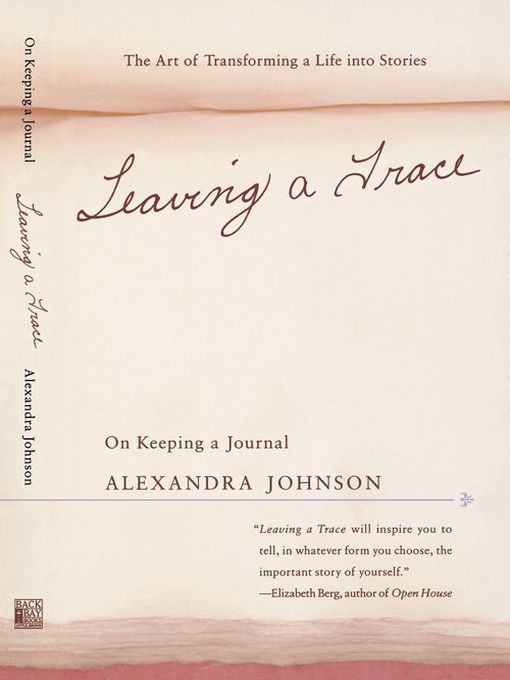
Leaving a Trace
On Keeping a Journal
کتاب های مرتبط
- اطلاعات
- نقد و بررسی
- دیدگاه کاربران
نقد و بررسی

January 1, 2001
Leather-bound five-year diaries were once popular gifts at children's birthday parties, sometimes providing the first taste of a lifelong pleasure. While an estimated 12 million journals are sold annually, Johnson, a teacher of creative nonfiction at Harvard and Wellesley, has found that people also record their lives on dinner napkins, menus, slips of paper and, increasingly, the computer. In her follow-up to The Hidden Writer, for which she won a PEN Award, she proffers advice for journal keepers who want to develop material for later books or who simply enjoy logging life's events. Commiserating on diaries abandoned as "joyless collections of grievances," she offers tips on how to "break the deadlock of introspective obsession." She advises perfectionists on how to silence their censorD"that dark, icy whisper of the confidence thief." Apt remarks by Virginia Woolf, Tobias Wolff, Annie Dillard and others add to her perceptive and often humorous insights on unearthing the interior life, improving observation skills and finding images that reveal significant motivations. The transformation of a factual log into a creative work requires investigating essential patterns: disclosing what has been left out of memory, charting periods of great intensity and connecting the dots between events and influences to develop a true narrative. Because a journal is usually a private affair that offers little opportunity for discussion, people seeking direction on keeping a successful one should welcome this thoughtful guidebook.

January 1, 2001
Highly personal (in fact, almost intimate), Johnson's long essay centers on the discipline of keeping a journal and the effect reading other journals has on a creative life. The essay is broken into chapters that provide some organizational structure; threaded throughout are exercises and activities to motivate, encourage, and inspire. Further, each chapter features stories and journal entries from well-known writers as well as everyday people. A gifted storyteller, Johnson provides examples on how the discipline of daily, reflective writing is crucial to nurturing creativity and skillfully weaves together the relationship between the creative process and the craft of writing. This tome is beautifully written, but as it focuses on transforming one's journal rather than getting published, its audience is rather limited. Johnson teaches memoir and creative nonfiction writing at Harvard and has published extensively in national newspapers and both scholarly and popular magazines. She won the PEN/Jerard Fund Award for The Hidden Writer: Diaries and the Creative Life. An optional purchase.--Denise S. Sticha, Seton Hill Coll., Greensburg, PA
Copyright 2001 Library Journal, LLC Used with permission.

January 1, 2001
The title comes from Virginia Woolf; the whole is liberally laced with quotations from journal writers and diarists celebrated and obscure. Johnson, who teaches journal and memoir workshops, devotes the three parts of her book to helping writers find practical inspiration, discover pattern and meaning, and move the material of a journal into memoir or fiction. She sees journal writing as a way of mining for the self, not only to observe and to reflect, but also to learn, to teach, and to hoard moments that can be held in the hand and examined later, like found stones. She devises stratagems for keeping the inner voice she calls the Censor at bay. Her exercises are direct and simple enough: "Think of a room you've known well over three stages in life. How did it--and you--change over time?" Johnson has collected journals from all sorts of people and uses their infinite variety well. Valuable in all sorts of ways for anyone looking for the right words.(Reprinted with permission of Booklist, copyright 2001, American Library Association.)

























دیدگاه کاربران